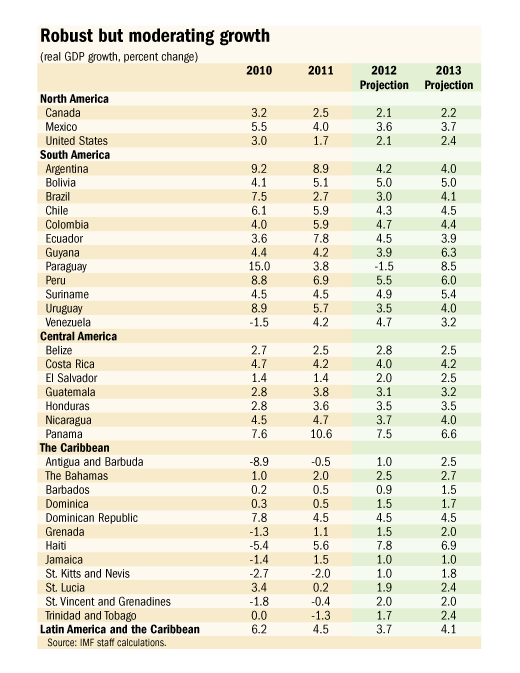
Typical street scene in Santa Ana, El Salvador. (Photo: iStock)
IMF Survey: Latin America Needs to Rebuild Resilience and Flexibility
April 25, 2012
- Latin America's growth expected to moderate in 2012, but tailwinds remain
- Risks remain from renewed tensions in Europe and oil prices
- Countries should strive to rebuild fiscal buffers, with flexible monetary policies
Economic growth in Latin America and the Caribbean is expected to moderate in 2012, but will remain solid, the IMF said in its latest assessment of the region.

A worker inside copper plant in Chile. Commodity exporters (mostly in South America) will continue to benefit from high commodity prices (photo: Ivan Alvarado/Reuters)
Regional Economic Outlook
The IMF’s Regional Economic Outlook for the Western Hemisphere, released on April 25, projects growth in Latin America at 3¾ percent in 2012, before returning to about 4 percent in 2013.
According to the report, growth continues to be led by commodity exporters, where favorable external conditions—in the form of high commodity prices and cheap and abundant external financing—continue to push domestic demand and credit.
Meanwhile, growth has held up reasonably well in Mexico and Central America, in part as a result of the steady, yet still tepid, recovery in the United States.
The Caribbean region finally turned the corner in 2011 after a long recession, although high debt levels and tourism dependence continue to constrain the outlook.
In its latest forecast, the IMF projects that global growth will ease from close to 4 percent in 2011 to about 3½ percent this year, returning to over 4 percent next year. For the United States, the IMF raised its projection to an average of 2¼ percent during 2012–13, compared with roughly 1¾ percent in 2011.
Risks to the outlook
The report says that Latin America continues to face potential problems, given the still fragile global recovery. It highlights three main risks to the outlook:
• Tensions in Europe. Renewed bouts of financial stress in the euro area could accelerate bank deleveraging, disrupt markets, and hit activity, both in Europe and beyond. However, the subsidiary model of European banks operating in Latin America, and their reliance on local funding, are likely to mitigate the risk of deleveraging.
• Oil-price shock. Geopolitical tensions in the Middle East could drive up oil prices, dampening global demand as well as nonoil commodity prices. Countries highly dependent on oil imports (Central America and Caribbean) and nonoil exports (for example, Chile, Paraguay, Peru) would be particularly affected.
• Medium-term risks. Looking beyond the near term, persistent fiscal imbalances in the United States and Japan could unsettle financial markets if unaddressed, while a hard landing in China could hit global growth and commodity prices.
That said, upside risks cannot be discarded for the region, particularly if the planned policy normalization does not materialize or proves insufficient.
Need to rebuild fiscal buffers
Despite downside risks, the report said that external conditions are expected to remain favorable, with easy external finance and strong terms of trade supporting growth in many of the larger countries. In this environment, the challenge for many countries in the region is to take advantage of favorable conditions to rebuild fiscal space, while giving monetary policy the needed flexibility to fine tune the economic cycle.
This challenge is especially crucial for South America: countries there stand to benefit the most from continued favorable external environment, but with output near or above potential, they also need to guard against overheating, the report cautioned. Special care also needs to be given to ensuring liquidity conditions are not disrupted should global volatility bouts recur.
Mexico and Central America, which are more dependent on the U.S. economy than their southern neighbors, also need to continue rebuilding fiscal buffers, especially in Central America where output is near potential and public debt remains above pre-crisis levels.
Weak balance sheets and strong tourism dependence will continue to restrain growth in the Caribbean, where fiscal consolidation needs to continue despite the sluggish growth environment, the report said.








